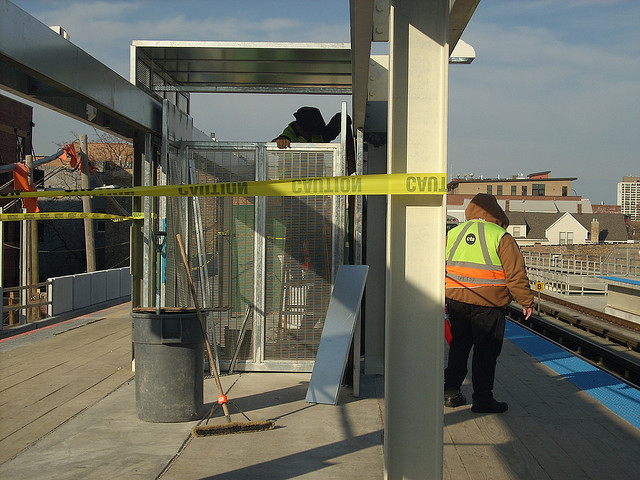CTA, Maintenance Unions Agree To Labor Deal
By Chuck Sudo in News on Nov 8, 2012 11:30PM
While we were caught in Election Day frenzy, the Chicago Transit Authority made some inroads to securing labor peace for a few years. CTA agreed to a five-year labor deal with construction and maintenance unions Monday with 12 different unions: IBEW Local #134; IBEW Local #9; Plumbers Local #130; Carpenter’s Local #1027; Machinists District #8; Painters District Council No. 14; Bricklayers Local #21; Sheetmetal Workers Local #73; Pipefitters’ Local #597; Boilermakers Local Lodge #1247; Teamsters Local #700; and Machinists Local #701.
The cornerstone of the deal involves trading work-rule changes for a no-layoff guarantee, provides for afternoon and evening shifts to be paid at straight time instead of overtime, and gives CTA greater flexibility in shift starting times. The changes are expected to save CTA $750,000.
Mayor Rahm Emanuel touted the deal in a press release as "a sound agreement that protects taxpayer investments and increases efficiency in services provided to the public." CTA President Forrest Claypool praised the contract as guaranteeing job security and maintaining current job levels for its duration.
What you may notice is the unions not listed in the deal: Amalgamated Transit Union Local 241 and 308. The unions representing bus drivers and train motormen have been working without a contract since Dec. 31, 2011 and have not agreed to work-rule changes Claypool and others have said are necessary to avoid a fare increase. With this deal worked out, it's clear Emanuel and Claypool hope the bus drivers union falls in line. Emanuel said during a press conference announcing the agreement.
“It’s all part of a consistent strategy that we have applied throughout the city — whether it’s in recycling, tree-trimming, here at the CTA and McCormick Place. Building a partnership with labor, finding unnecessary costs that are cost-prohibitive, and applying those savings to both more workers, as well as a price taxpayers can afford.”
